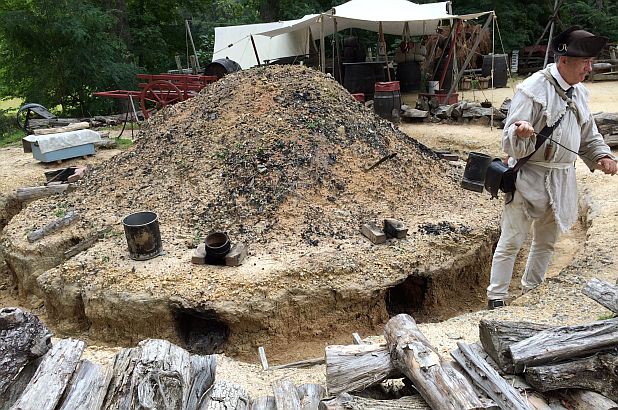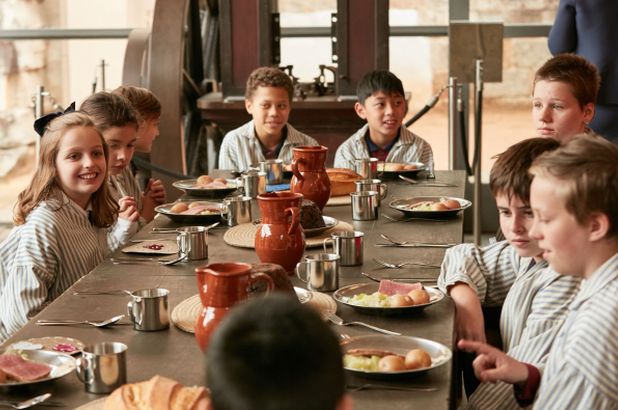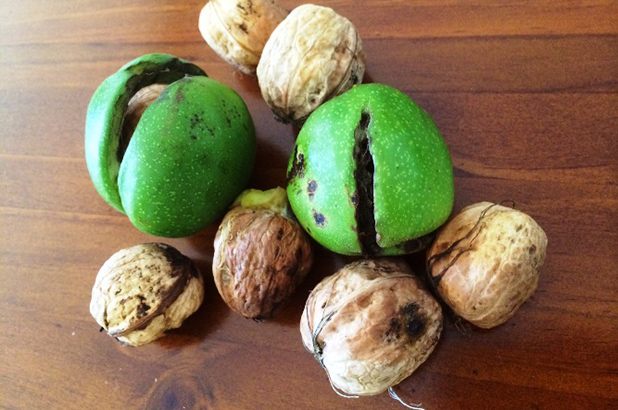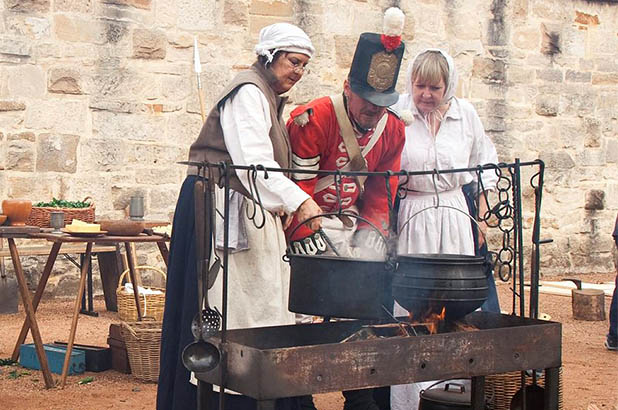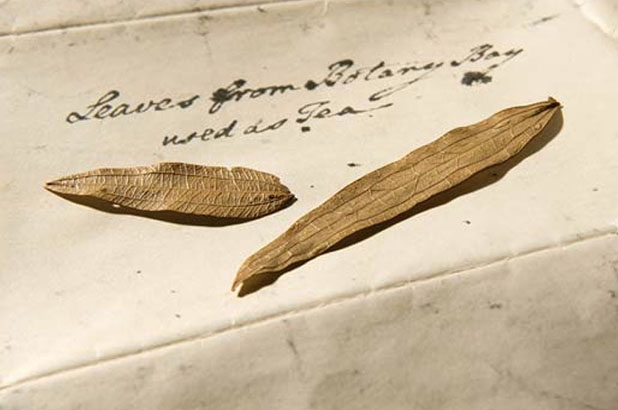While the Curator rattles the pots and pans, I’m looking at the cooking ‘apparatus’ upon which they were used at various points in time. We’ve recently looked at domestic hearth cookery from the early 1800’s, but today I’m taking us to the First Fleet encampment at Sydney Cove in 1788.
Continue readingBullseye! In search of Sydney’s first colonial kitchen
Recreated 1780s military field kitchen built at the American Revolution Museum in Yorktown, Virginia, USA. Photo © Jacqui Newling, Sydney Living Museums,.
